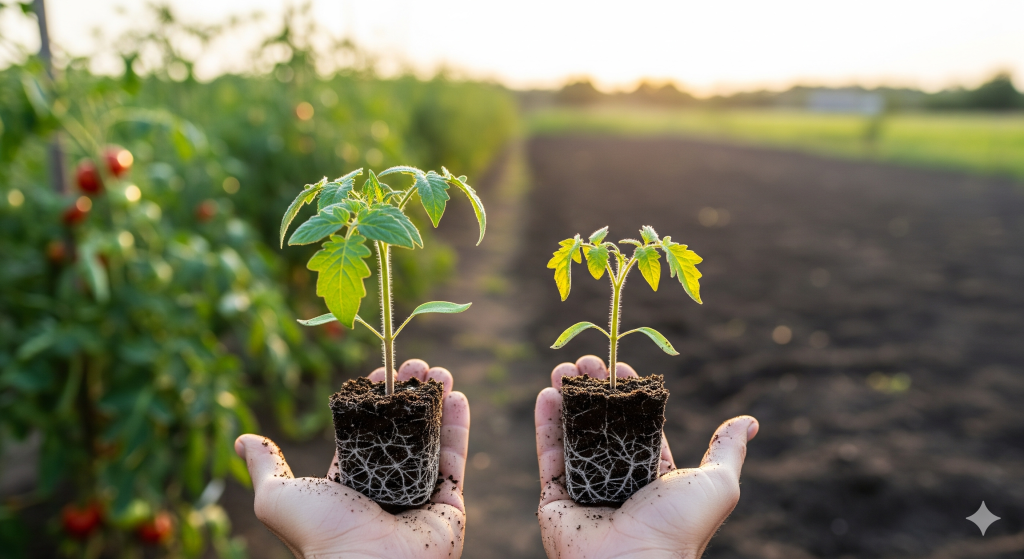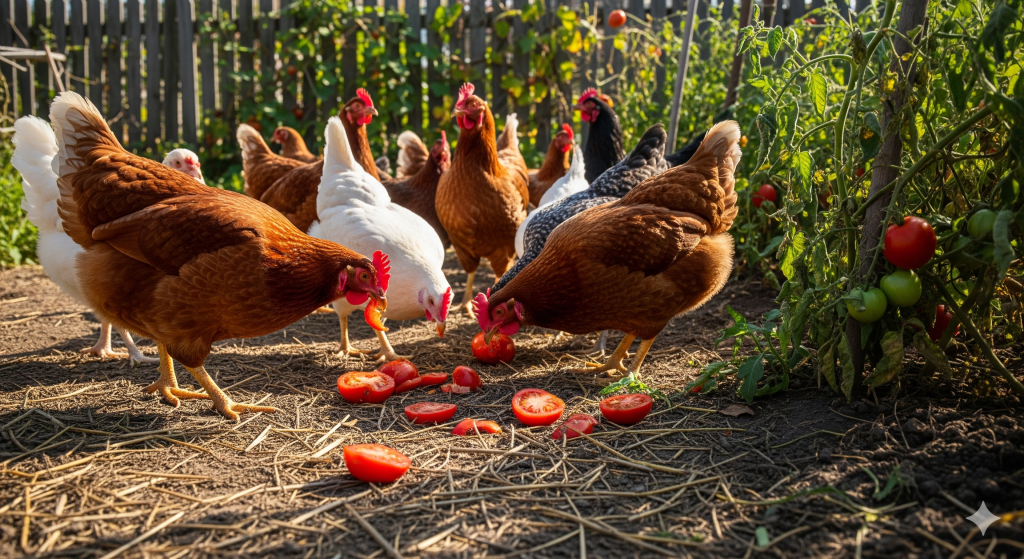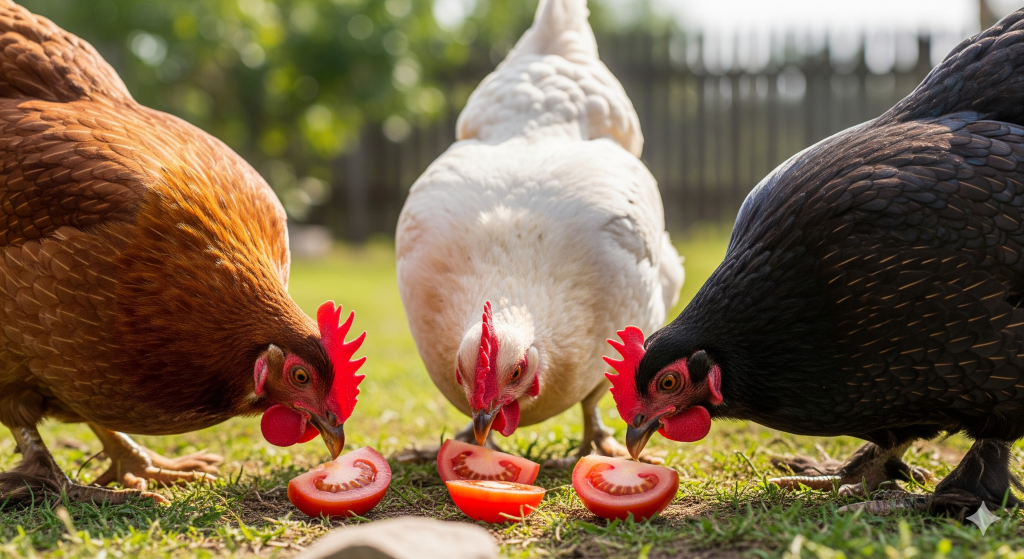Table of Contents
As the gardening season draws to a close and gardeners begin planning for next spring, a crucial question often arises from the desire to replicate a successful harvest. If you had a patch that produced perfect tomatoes, it’s tempting to simply clear the old vines and earmark that same successful spot for next year’s crop. This leads to one of the most important questions in vegetable gardening: can you plant tomatoes in the same spot every year?
The answer from horticultural experts and seasoned gardeners alike is a resounding and emphatic no.
While it may seem like the easiest path, repeatedly planting tomatoes in the same soil is one of the most detrimental practices for the long-term health of your garden. It invites a host of problems that can lead to progressively weaker plants and disappointing harvests. The solution lies in a fundamental agricultural principle known as crop rotation. Understanding why you shouldn’t plant tomatoes in the same location is the first step toward creating a more resilient, sustainable, and productive garden, regardless of your climate.
This comprehensive guide will explain the science behind why this practice is so risky, what to do with your soil after a tomato crop, and how to implement a simple rotation plan that will keep your garden thriving for years to come.
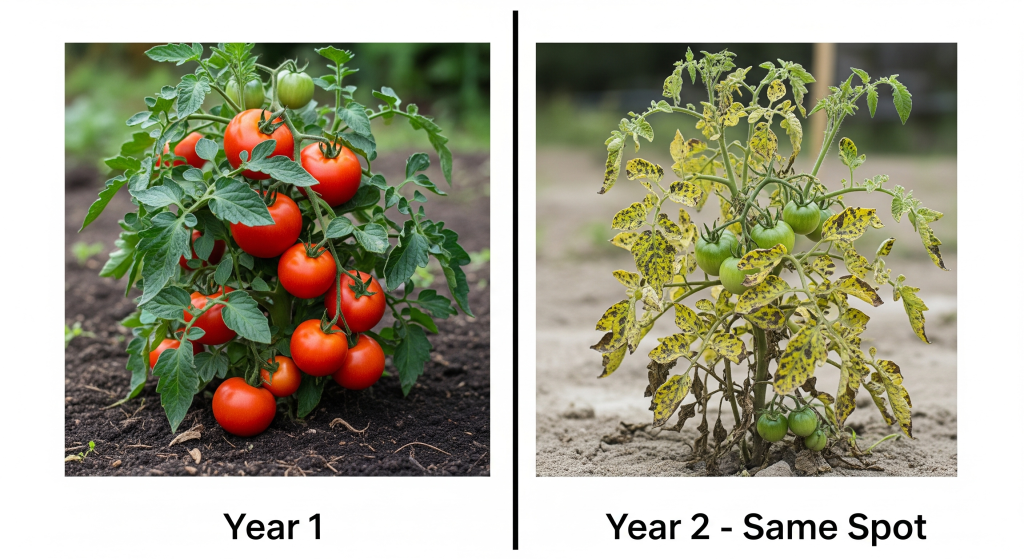
Can You Plant Tomatoes in the Same Place Two Years in a Row?
It’s a common scenario: you had a fantastic tomato harvest in one sunny spot, and you want to replicate that success. Surely, planting there just one more time won’t hurt? Unfortunately, the risks increase dramatically even in the second year. While you might get away with it and not see a total crop failure, you are setting the stage for significant problems.
The issues begin to compound immediately. Here’s what’s happening beneath the soil surface:
- Disease Pathogens Build Up: Microscopic spores from fungal diseases like Early Blight, Septoria Leaf Spot, and Fusarium Wilt, along with harmful bacteria, can survive the winter in the soil and on leftover plant debris. When you plant a new, susceptible tomato plant right back into this infected zone the following spring, you are giving these overwintered pathogens an immediate and perfect host. This almost guarantees an earlier and more severe disease outbreak.
- Pest Eggs Overwinter: Pests that target tomatoes, such as the destructive root-knot nematode, lay their eggs in the soil. These eggs can easily survive the winter and hatch in the spring, ready to attack the new roots. Planting tomatoes back-to-back provides a continuous and reliable food source, allowing their populations to explode.
- Nutrient Depletion Begins: Tomatoes are famously “heavy feeders.” This means they draw significant amounts of specific nutrients from the soil, especially nitrogen (N), phosphorus (P), potassium (K), and calcium (Ca). In the first year, they use up a portion of the available reserves. By the second year, the soil is already diminished, forcing the new plant to struggle for its food, which results in weaker growth and lower resilience from the start.
While your second-year crop may not be a complete failure, it is almost certain to be less healthy and less productive than the first. You are setting your plants up for a much tougher battle against pests and diseases.
Want the Ultimate Guide to Off-Grid Living?
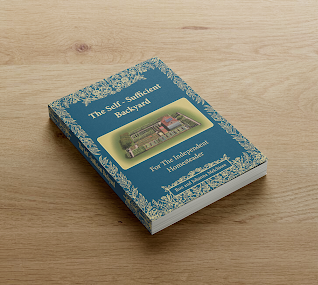
If you love the self-sufficient lifestyle, this is the only guide you’ll ever need. Learn how to generate your own power, secure your water supply, and become truly independent. No fluff, just actionable plans.
➡️ Check out The Self-Sufficient Backyard and start your journey today!
Can I Use the Same Soil from Last Year for Tomatoes?
This question is slightly different, as it can apply to both in-ground gardens and container planting. The core principle, however, remains the same: using the exact same, unamended soil for tomatoes year after year is a recipe for failure. The soil becomes exhausted and potentially contaminated.
Can You Grow Tomatoes in the Same Soil Each Year?
For in-ground beds, the answer goes back to crop rotation—you should not be planting in the same soil patch each year. For containers and pots, the situation is even more critical. The limited volume of potting mix is stripped of its nutrients far more quickly than garden soil. Furthermore, pathogens can become highly concentrated in a container. Reusing the same potting mix without revitalizing it will almost certainly lead to poor results. At the very least, the potting mix from a previous tomato plant should be thoroughly amended before being used for a different type of plant.
What to Do with Soil After Growing Tomatoes
Whether in a pot or in the ground, soil that has just hosted a tomato crop needs to be rehabilitated before its next planting—especially before planting another heavy feeder. This is a crucial step in maintaining a healthy garden.
Step 1: Clear and Dispose of Debris
At the end of the season, remove the entire tomato plant, including the roots. If the plant showed any signs of disease (spotted leaves, wilting, stunted growth), do not compost it. The pathogens can survive the composting process and be spread throughout your garden when you use the finished compost. It is much safer to bag and dispose of diseased plant matter in the trash or burn it if local regulations permit.
Step 2: Amend Generously with Organic Matter
This is the most important step for revitalizing your soil. You need to replenish the nutrients and organic matter that the tomatoes consumed. Add a thick layer (2-4 inches) of high-quality organic material and work it into the top 6-8 inches of soil. Excellent choices include:
- Compost: The single best amendment for any garden soil.
- Well-Rotted Animal Manure: Chicken, cow, or goat manure provides a rich source of nitrogen and other nutrients.
- Leaf Mold or Shredded Leaves: These add valuable organic matter that improves soil structure.
Step 3: Consider Soil Solarization
In regions with long, hot, and sunny summers (like much of the southern and western US), soil solarization can be a highly effective, organic method for killing soil-borne pathogens and weed seeds. After clearing and amending the bed, water it deeply. Then, cover the bed tightly with a sheet of clear plastic, burying the edges to trap the heat. Leave it covered for 4-6 weeks during the hottest part of the year. The sun’s heat will raise the soil temperature to levels that are lethal for many fungi, bacteria, and nematodes.
Step 4: Plant a Cover Crop
If you have a few months between major crops (or over the winter), planting a cover crop or “green manure” is an excellent way to restore soil health. Legumes like winter peas, crimson clover, or vetch are great choices as they fix atmospheric nitrogen, naturally refertilizing the soil. Once the cover crop has grown, you can simply chop it down and incorporate the green matter back into the soil.
How Many Years Can You Plant Tomatoes in the Same Place?
To effectively break the life cycles of the most common and persistent soil-borne pests and diseases, you need to practice crop rotation. The standard and most widely accepted recommendation is to follow a 3 to 4-year rotation schedule.
This means you should only plant tomatoes—or any of their close relatives from the nightshade family (peppers, eggplants, potatoes)—in a specific garden bed once every three to four years. For example, if you divide your garden into four sections, you would plant your nightshades in section 1 in the first year, section 2 in the second year, section 3 in the third, section 4 in the fourth, and not return to section 1 until the fifth year. This long interval gives soil pathogens time to die off due to the absence of their preferred host plants.
Conclusion
While it requires a little extra planning, the answer to “can you plant tomatoes in the same spot every year” is a clear and resounding “no.” The risks of disease buildup and severe nutrient depletion are simply too high. By embracing the simple yet powerful principle of a 3- to 4-year crop rotation, you are making a crucial investment in the long-term health and vitality of your garden.
Think of crop rotation not as a restrictive rule, but as a wise and essential strategy for sustainable gardening. It is your best defense against the invisible enemies lurking in the soil. By rehabilitating your soil after each crop and rotating your plant families, you create a balanced, resilient, and productive garden ecosystem that will reward you with healthier plants and more bountiful harvests for many years to come.

